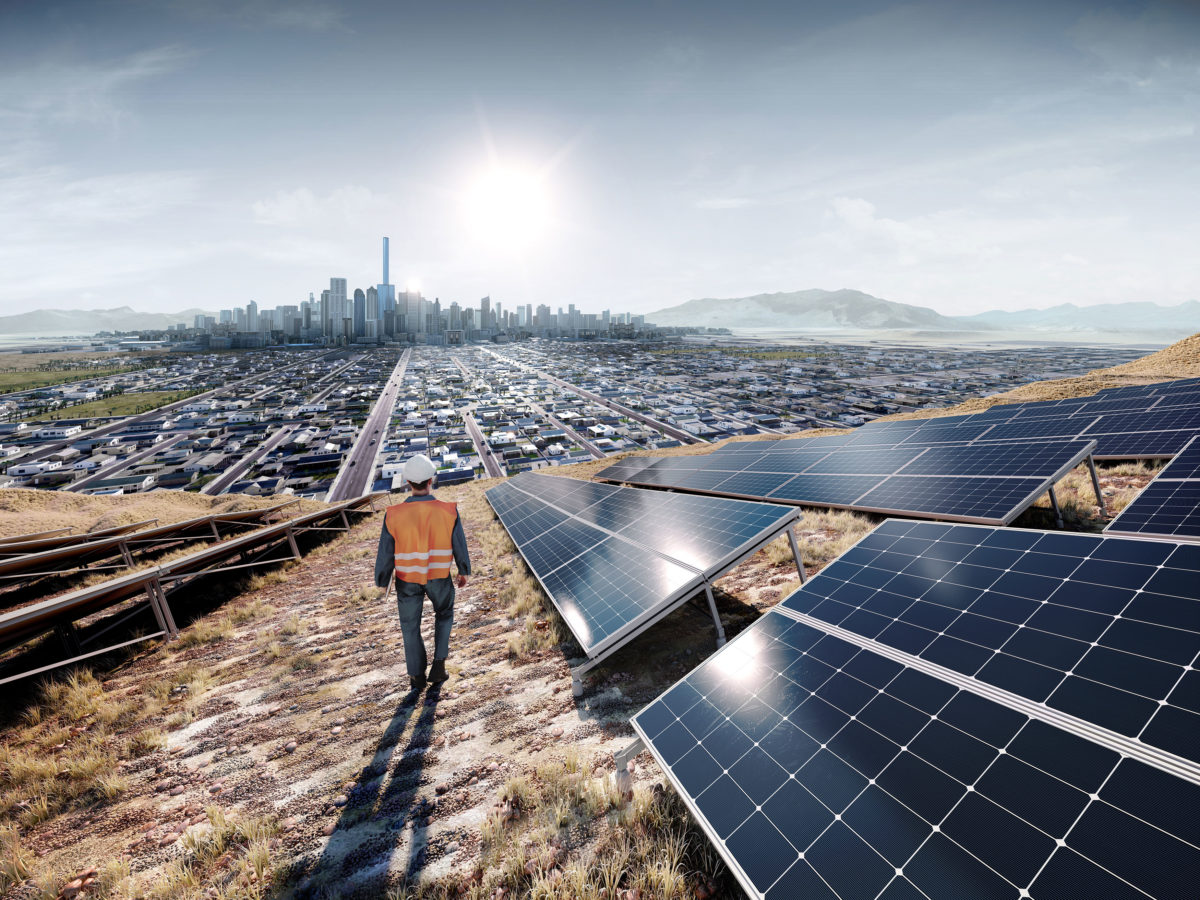The debate as to whether PV power plant developers and EPCs should adopt string or central inverters is not entirely new, but the rapid growth of the small-utility scale sub-market segment in Australia is casting it in a new light. After a full consideration of an individual project’s purpose and boundary conditions, string inverters may be worth consideration alongside centralised solutions.
A new White Paper from inverter supplier Fimer sets out the parameters and process by which either central or string inverters are selected for an Australian utility scale array, making the persuasive case that a project-specific approach should be taken. Risks lie, the White Paper argues, in allowing past experiences guide future decisions.
Fimer’s Aaron Zadeh, Australia’s manager of utility solar, energy storage and EV chargers, wrote the paper and in it he highlights inverter considerations required in utility projects, especially the 1-5 MWp utility scale sub-segment.
“The White Paper is likely to be more appealing to project developers in the sub-5 MW segment, as they have the opportunity to consider a centralised or a decentralised option for their development,” says Zadeh, “instead of going with simply the least expensive solution which may not cater to their projects goals in the longer term.” He continues that the small-scale utility PV projects are proving attractive, given shorter approval and commissioning times.
The White Paper sets out in detail the cost considerations that will likely inform EPC inverter decision making. The analysis concludes that while capex will be lower for a central inverter, there are risks in terms of opex – in particular the losses associated with central inverter outages which need to be carefully managed if centralised solution is selected.
An example of a sub-five MW array is given, whereby one or two central inverters are selected. If there is an outage in one or both of the inverters, while waiting for an engineer with the relevant expertise in working with medium voltage equipment, the project owner could be losing 50-100% of the PV project’s power output.
Spare parts for central inverters also may not be readily available on or close to the project site. This eventuality has been brought into sharp relief by the Covid-19 pandemic and the way in which it has stressed supplied chains. Qualified engineers themselves are likely not to be able to cross Australian state or international borders given potential restrictions in place by governments.
“Serviceability and reliability is more important in the age of pandemics and epidemic diseases that are shaking-up the globalisation and supply chain,” says Zadeh. “The impacts from outbreaks like Covid-19 are here to stay for the coming years so it should be carefully considered when making an important decision which could influence the plant performance and viability.”
While highlighting this and other important considerations that may lend weight toward string inverters, in particular for small utility-scale projects, the White Paper acknowledges that in some circumstances central inverters remain the best option. This is particularly true where a portfolio of utility scale arrays is owned or managed by a single entity and long-term service agreements (LSA) are in place. In such situations, qualified engineers are likely on staff, given their importance in maintaining smooth operation, carrying out preventative maintenance and avoiding costly outages.
The White Paper presents two case studies, highlighting the advantages delivered either by central or string inverters. These include a 3.8 MW rooftop array in Australia, that was supplied with 18 Fimer PVS-175 three phase string inverters. A feature of the system is its higher AC and DC voltage and the quick installation time facilitated by the plug-and-play solution. The system utilises Fimer’s Aurora Vision Plant Management Platform.
The second case study is a 8 MW ground mounted array in Greece, which was supplied with two Fimer PVS980-CS compact skids. The 40ft skids include a PVS980 central inverter with premium medium voltage equipment. Installation of the entire project was completed in less than four months. The inverters are protected from the harsh weather on site by high ingress protection, double-layer cabinet.
The big decision: Centralised vs. decentralised inverter solution in Australia and New Zealand is available free of charge today.
This article was paid for by Fimer.
This content is protected by copyright and may not be reused. If you want to cooperate with us and would like to reuse some of our content, please contact: editors@pv-magazine.com.









By submitting this form you agree to pv magazine using your data for the purposes of publishing your comment.
Your personal data will only be disclosed or otherwise transmitted to third parties for the purposes of spam filtering or if this is necessary for technical maintenance of the website. Any other transfer to third parties will not take place unless this is justified on the basis of applicable data protection regulations or if pv magazine is legally obliged to do so.
You may revoke this consent at any time with effect for the future, in which case your personal data will be deleted immediately. Otherwise, your data will be deleted if pv magazine has processed your request or the purpose of data storage is fulfilled.
Further information on data privacy can be found in our Data Protection Policy.